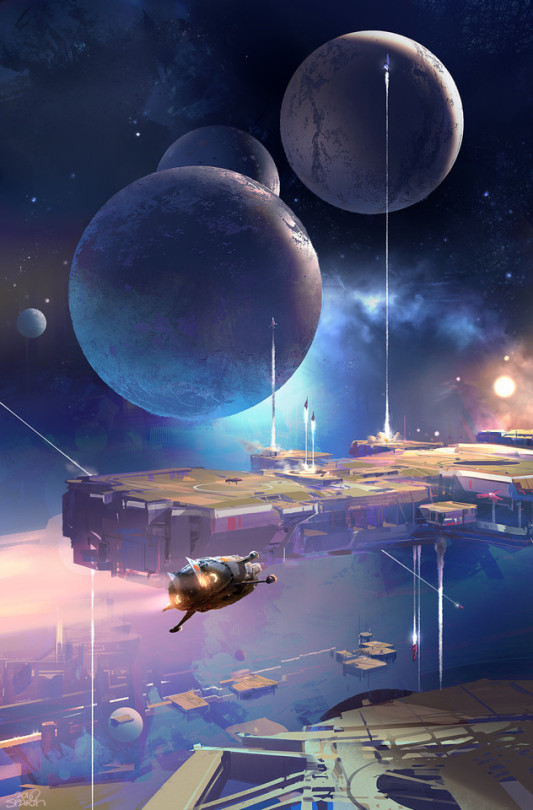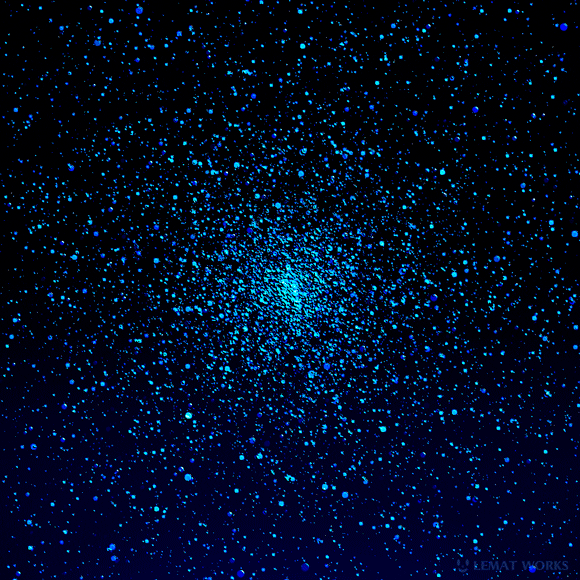What Caused This Outburst Of This Star Named V838 Mon? For Reasons Unknown, This Star’s Outer Surface

What caused this outburst of this star named V838 Mon? For reasons unknown, this star’s outer surface suddenly greatly expanded with the result that it became the brightest star in the entire Milky Way Galaxy in January 2002. Then, just as suddenly, it faded. A stellar flash like this had never been seen before – supernovas and novas expel matter out into space.
Although the V838 Mon flash appears to expel material into space, what is seen in the above GIF from the Hubble Space Telescope is actually an outwardly moving light echo of the bright flash.
In a light echo, light from the flash is reflected by successively more distant rings in the complex array of ambient interstellar dust that already surrounded the star. V838 Mon lies about 20,000 light years away toward the constellation of the unicorn (Monoceros), while the light echo above spans about six light years in diameter.
Credit: NASA, ESA
To discover more, visit: https://www.nasa.gov/multimedia/imagegallery/image_feature_2472.html
More Posts from Epic-flight and Others


and now there’s TWO John Scalzi covers. https://gumroad.com/sparth

It's your full moon of October 2022 l Roger Hyman








Consolidator-class Corps Assault Ship - Ansel Hsiao

Produced by LEMAT WORKS
✨ Chill Space1 2 3 / Twinkle Night2 3 13 / Neon Space3 / Portfolio ✨

Blake Rottinger



”I didn’t feel like a giant. I felt very, very small.”
–Neil Armstrong on looking back at the Earth from the Moon in July 1969.
(Sources: 1, 2)

Space shuttle re-entry.

Mountain Lake - 210408


HiPOD: Bedrock Exposures in Nirgal Vallis
This observation covers two tributaries and the main channel of Nirgal Vallis. The channel is approximately 610 kilometers long and is named after Nergal, the Babylonian god of war and counterpart to the Roman god of war, Mars. Mars Orbiter Camera image show light-toned bedrock; our high resolution picture can gives us a better view of the channel form and bedrock stratigraphy. (Grayscale cutout is less than 5 km across; enhanced color is less than 1 km.)
ID: ESP_074945_1515 date: 23 July 2022 altitude: 257 km
NASA/JPL-Caltech/UArizona
-
 passengercloud liked this · 9 months ago
passengercloud liked this · 9 months ago -
 er-the-surgeon liked this · 9 months ago
er-the-surgeon liked this · 9 months ago -
 inalandofpixel liked this · 9 months ago
inalandofpixel liked this · 9 months ago -
 subjectaash-maxx liked this · 1 year ago
subjectaash-maxx liked this · 1 year ago -
 pasteleriasilvestre reblogged this · 1 year ago
pasteleriasilvestre reblogged this · 1 year ago -
 demprosa liked this · 1 year ago
demprosa liked this · 1 year ago -
 nagasarennayoex reblogged this · 1 year ago
nagasarennayoex reblogged this · 1 year ago -
 nagasarennayoex liked this · 1 year ago
nagasarennayoex liked this · 1 year ago -
 cosedejevhlave reblogged this · 1 year ago
cosedejevhlave reblogged this · 1 year ago -
 legendarygoatgod reblogged this · 1 year ago
legendarygoatgod reblogged this · 1 year ago -
 autumnggggg liked this · 2 years ago
autumnggggg liked this · 2 years ago -
 lightmcqueen liked this · 2 years ago
lightmcqueen liked this · 2 years ago -
 just-two-crows liked this · 2 years ago
just-two-crows liked this · 2 years ago -
 bundfald reblogged this · 2 years ago
bundfald reblogged this · 2 years ago -
 bundfald liked this · 2 years ago
bundfald liked this · 2 years ago -
 well-traveled-woman liked this · 3 years ago
well-traveled-woman liked this · 3 years ago -
 umiiwas liked this · 3 years ago
umiiwas liked this · 3 years ago -
 fl17600-leo liked this · 3 years ago
fl17600-leo liked this · 3 years ago -
 renascenso liked this · 3 years ago
renascenso liked this · 3 years ago -
 jaibajaja liked this · 3 years ago
jaibajaja liked this · 3 years ago -
 inward1 liked this · 3 years ago
inward1 liked this · 3 years ago -
 compassionata liked this · 3 years ago
compassionata liked this · 3 years ago -
 piri-reis1 liked this · 3 years ago
piri-reis1 liked this · 3 years ago -
 autanis1155 liked this · 3 years ago
autanis1155 liked this · 3 years ago -
 niesmoon liked this · 3 years ago
niesmoon liked this · 3 years ago -
 kii1l liked this · 3 years ago
kii1l liked this · 3 years ago -
 zegarte reblogged this · 3 years ago
zegarte reblogged this · 3 years ago -
 nanepic-reborn reblogged this · 3 years ago
nanepic-reborn reblogged this · 3 years ago -
 nanepic-reborn liked this · 3 years ago
nanepic-reborn liked this · 3 years ago -
 jacobbathead reblogged this · 3 years ago
jacobbathead reblogged this · 3 years ago -
 marieantoinettesbakery liked this · 3 years ago
marieantoinettesbakery liked this · 3 years ago -
 klavieratrek liked this · 3 years ago
klavieratrek liked this · 3 years ago -
 valentinagranadospoetry reblogged this · 4 years ago
valentinagranadospoetry reblogged this · 4 years ago -
 valentinagranadospoetry liked this · 4 years ago
valentinagranadospoetry liked this · 4 years ago -
 infernally-b reblogged this · 4 years ago
infernally-b reblogged this · 4 years ago -
 esthetiqueillusion liked this · 4 years ago
esthetiqueillusion liked this · 4 years ago -
 always-dawn reblogged this · 4 years ago
always-dawn reblogged this · 4 years ago -
 softloverluv liked this · 4 years ago
softloverluv liked this · 4 years ago
